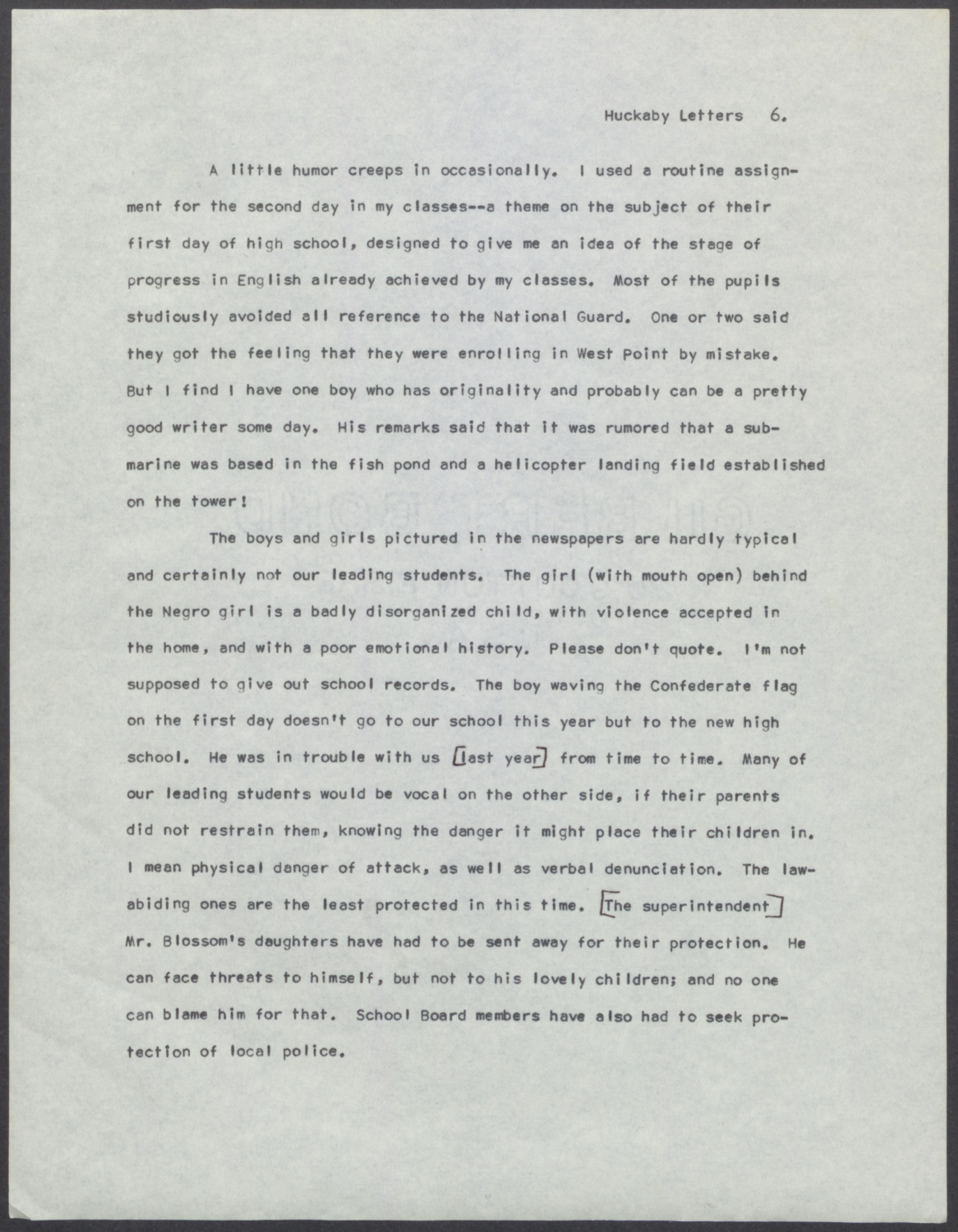Introduction
In 1955, following Brown v. Board of Education, the Little Rock school board accepted a plan of gradual integration presented by superintendent Virgil Blossom. According to the plan, Little Rock schools were to begin the integration process in the fall of 1957. However, when nine African American students enrolled in previously all-white Little Rock Central High School appeared in front of their new school on September 4, 1957, they were met by a white angry mob and the Arkansas National Guard. Governor of Arkansas Orval Faubus called the latter not to protect the black students’ constitutional right to an equal education but to block them from entering the school building.
In response to this violation of federal laws, President Dwight Eisenhower federalized the Arkansas National Guard and ordered them to support the integration and protect the African American students. The students are known today as the Little Rock Nine. Although after Eisenhower’s intervention the Little Rock Nine could enter the school, the crisis was far from over.
In this activity, you will examine a letter that Elizabeth Huckaby, who taught English and was vice-principal for girls at Central High School, wrote to her brother Bill days after the Little Rock Crisis erupted.
Activity Questions
Letters to Bill by Elizabeth Huckaby, first draft, page 6
- Who wrote the letter and when? See the timeline of the Little Rock Crisis (https://www.nps.gov/chsc/learn/historyculture/timeline.htm). How does this letter fit in the timeline of the 1957 events?
- Why does Huckaby refer to the National Guard? What are they doing outside of Central High? See “Introduction” and additional resources for more information. What do we learn about them from the letter?
- How are students in Huckaby’s English class reacting to the crisis? What do you think about their choice to “studiously avoid all references to the National Guard”?
- In this letter, Huckaby refers to this famous photo. What does she say about “the girl (with mouth open)” in it and about other young people who harassed the Little Rock Nine?
- How do you understand Huckaby’s claim that “many our students would be vocal on the other side if their parents did not restrain them”?
- Research how the Little Rock Nine were treated by their white colleagues after they were finally able to enter and attend Central High. Do you agree with Huckaby’s assessment of Central High white students? Was she correct to suggest that the harassers were “hardly typical”?
- Huckaby mentions that superintendent Blossom and school board members had to seek protection for themselves and their family members. What was their role in the crisis? Why were they threatened? See “Introduction” and additional resources for more information.
- What do you think about Huckaby’s description of the crisis as “the current unpleasantness” and her insistence that her guests from Louisiana do not mention it?
- Think of who Huckaby was. How do you think her own experience and point of view shaped her perception of the Little Rock Crisis? Do you agree with her interpretation of the events?
Primary Sources
To learn more about the primary sources featured in the activities above, click the following links:
Arkansas Social Studies Standards
US History Since 1890, Grades 9 – 12
- Strand: Era 9: Post-war United States 1945 to Early 1970s
- Content Standard 5: Students will analyze social, economic, and political changes in the United States between 1945 and 1970.
- Era9.6.USH.1 Analyze the roles of individuals, groups, and the government in securing civil rights during the mid-20th century using a variety of primary and secondary sources (e.g., minorities, women, NAACP, federal court cases, legislation, Twenty-fourth Amendment)
- Era9.6.USH.4 Examine domestic policies of the federal government between 1945 and 1970 and the outcomes from multiple perspectives (e.g., New Frontier, Great Society, civil rights, social issues)
- Era9.6.USH.5 Construct historical arguments of long-term effects of social and economic changes occurring during the mid-20th century using available data and multiple sources
African American History, Grades 9 – 12
- Strand: Illusion of Equality 1950-1970
- Content Standard 6: Students will analyze the African American experience from 1950-1970.
- IE.6.AAH.2 Examine the various influences of African Americans on social change using primary and secondary sources from multiple perspectives (e.g., migration, feminism, military, social organizations)
- IE.6.AAH.4 Analyze the effects of legislative developments on the African American experience between 1950-1970 (e.g., voting, civil rights, fair housing, education, employment, affirmative action)
Arkansas History, Grades 7 – 8
- Strand: History Content Standard 7: Students will examine the impact of historical events and people on the development of Arkansas.
- H.7.AH.7-8.8 Analyze social, economic, and political effects of the Civil Rights Movement on various regions in Arkansas from multiple perspectives (e.g., integration, state legislation)
Arkansas History, Grades 9 -12
- Strand: Era 5: World War II Through the Civil Rights Era 1941-1967
- Content Standard 5: Students will analyze factors that influenced the perspectives of Arkansans from World War II through the Civil Rights Era.
- Era5.5.AH.9-12.4 Analyze the social, economic, and political effects of the Civil Rights Movement in various regions of Arkansas using primary and secondary sources from multiple perspectives (e.g., segregation; voting; integration of Fayetteville, Hoxie, and Little Rock School Districts; federal and state legislation)
Key Terms
Downloadable Guides and Handouts
We encourage K-12 educators to use History Alive: Virtually! in a way that will best match their classroom needs. The “Exercise” handout includes a complete exercise as featured on this website, the “Primary Sources” handout includes only primary sources used in the exercise, and the “Questions” handout includes analytical questions from the exercise but is editable and can be easily changed to best match students’ needs.
“The Crisis Continues” – Exercises


